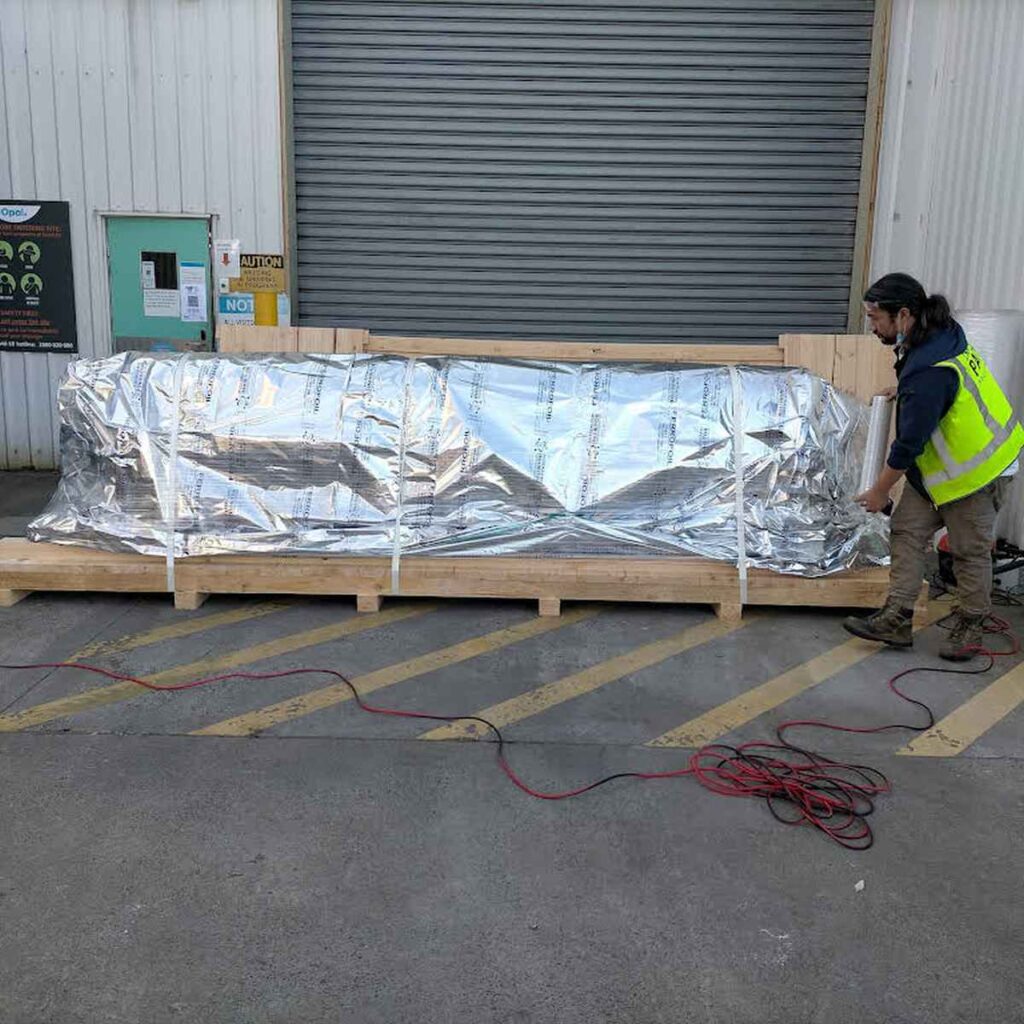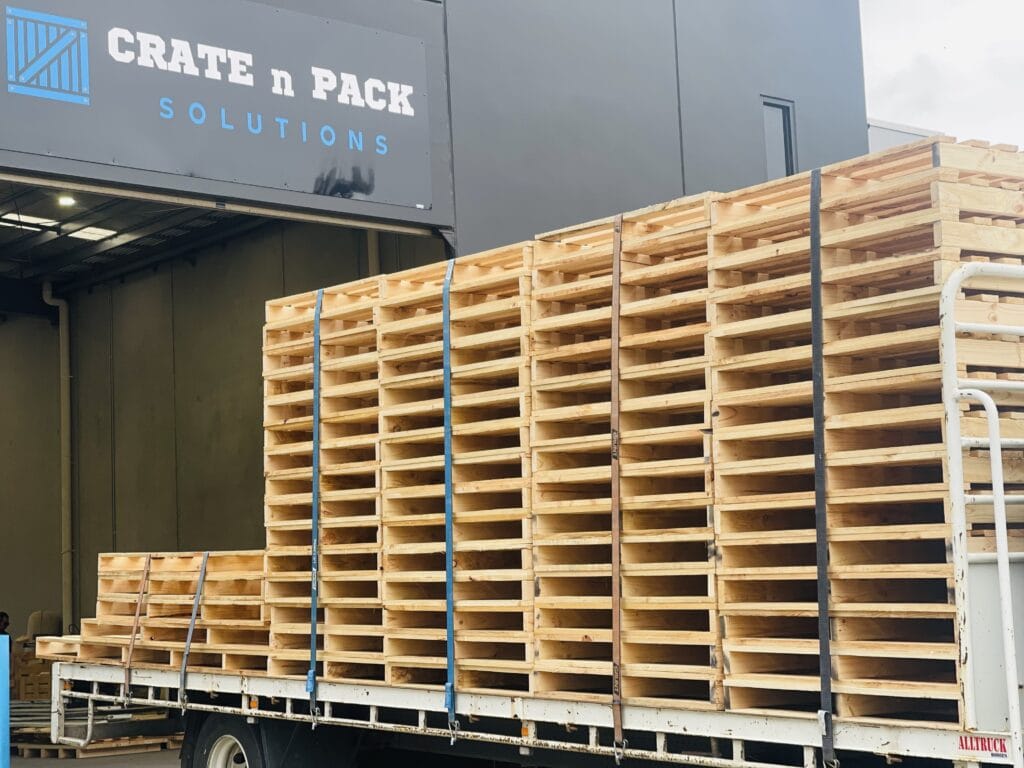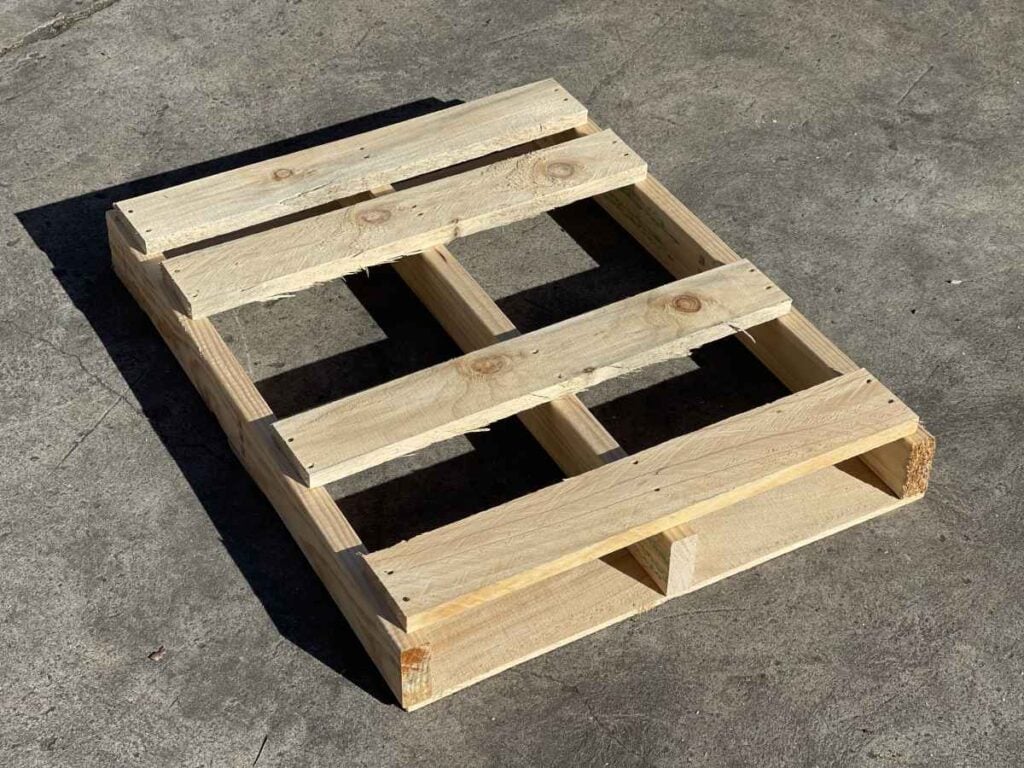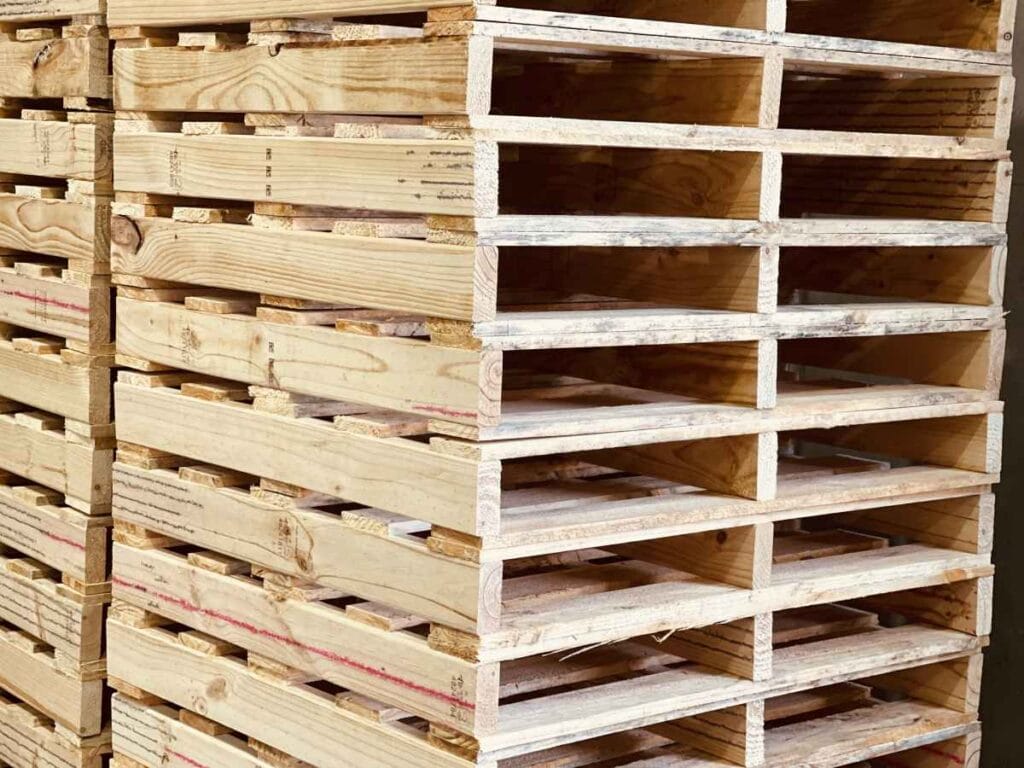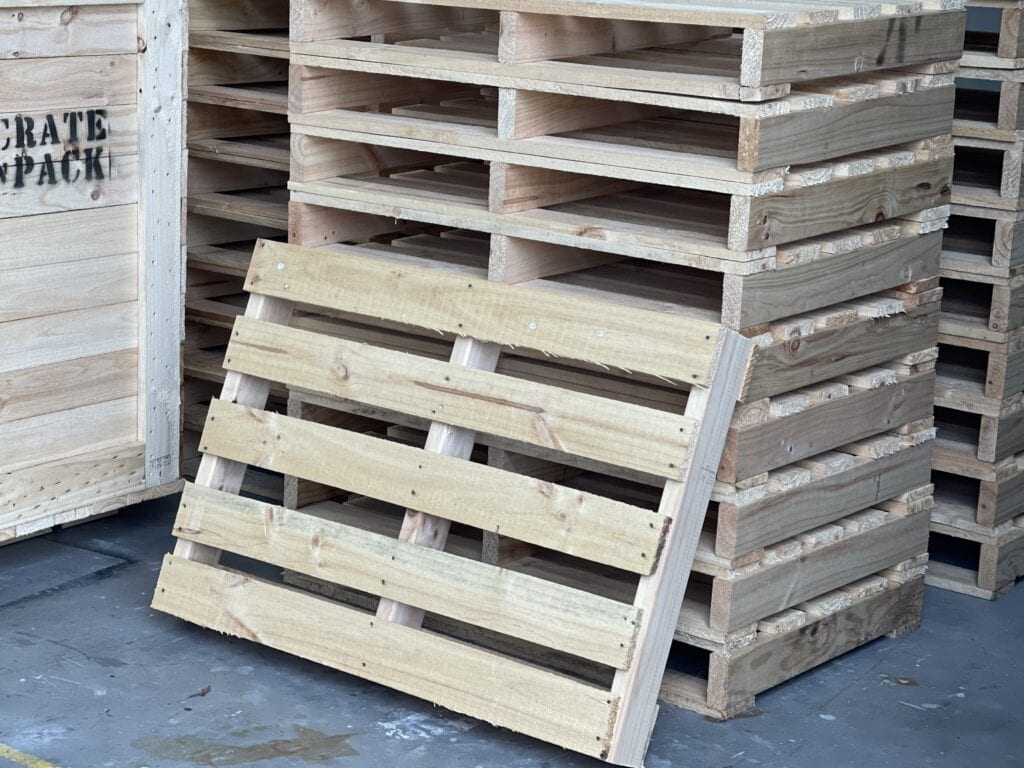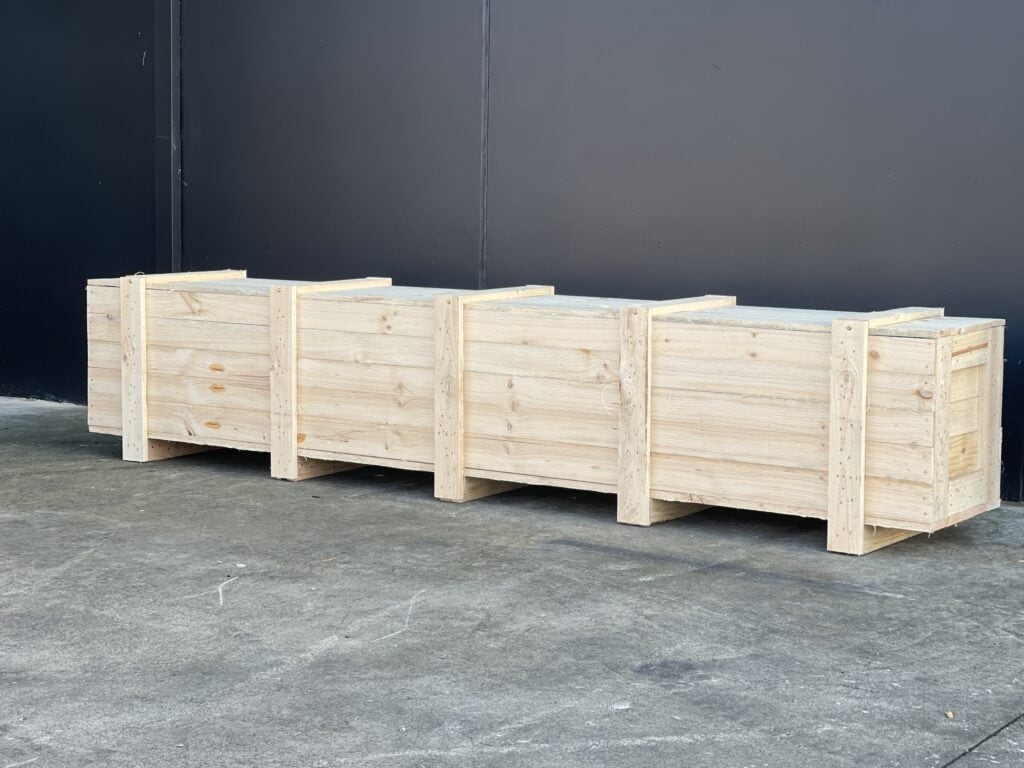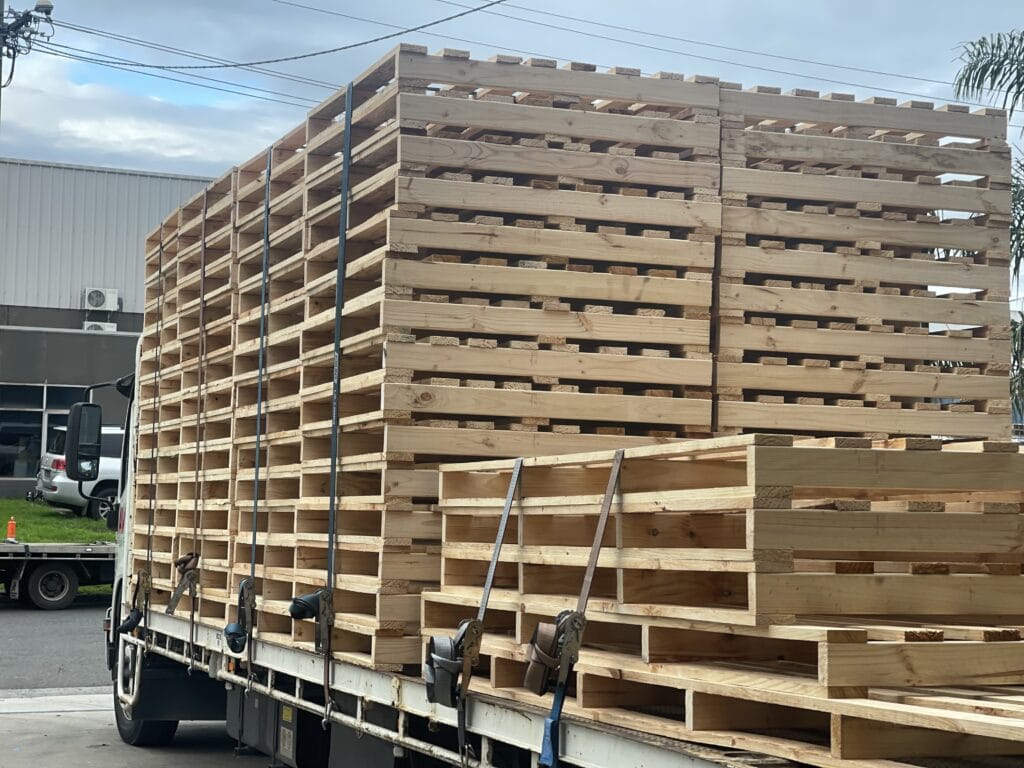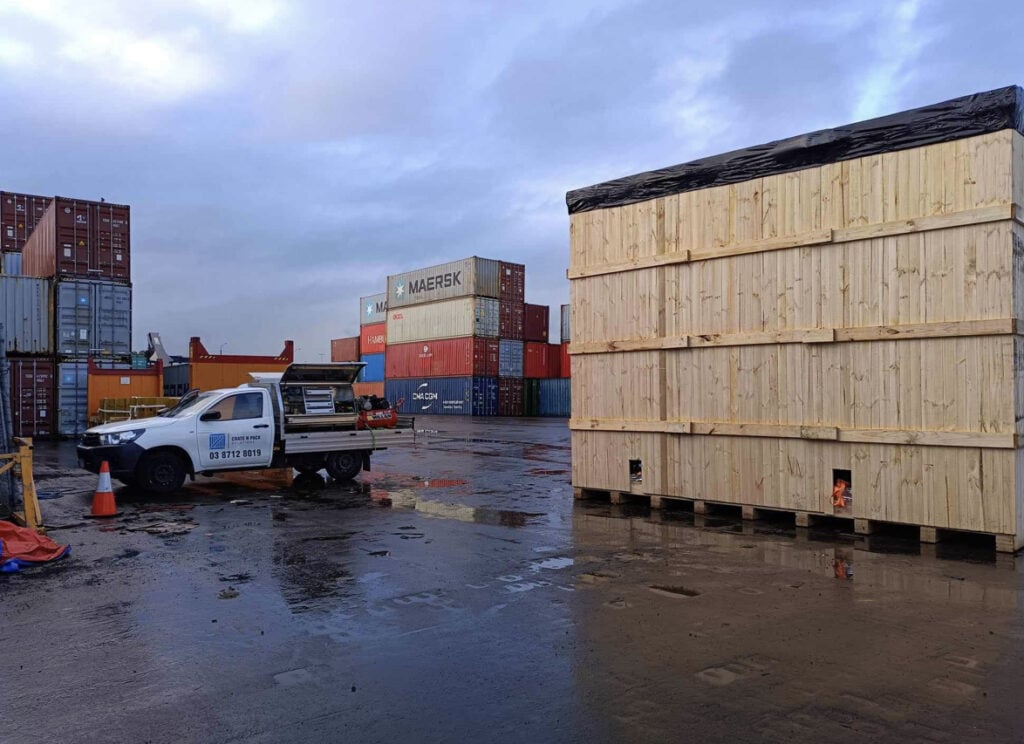Pallet wrapping machines are a technological marvel in the area of effective logistics and industrial operations because they simplify the process of securing products onto pallets for storage, transit, and distribution. These machines, also known as stretch wrapping machines, have greatly improved the efficiency and accuracy with which palletised cargoes are produced.
Pallet wrapping machines use cutting-edge technology to firmly wrap a stretch wrap or plastic film around a pallet of goods, forming a safe and stable unit that protects its contents from movement, damage, and the elements. This article explains what pallet wrapping machines are and how they work, emphasising their usefulness in today's supply chain management.
Pallet wrapping machines solve the problems of load stability and security, making them an essential part of the packaging and logistics chain. The pallet of items is placed on the machine's turntable, and the machine dispenses and stretches the stretch wrap film over the cargo while the turntable revolves.
The flexibility of the film allows it to make a snug fit around the objects, forming a strong attachment that keeps them from shifting around during transport. Companies can adjust the tension, number of wraps, and pace at which the film is applied on these machines to meet their unique packaging requirements.
The automation of pallet wrapping not only improves productivity but also guarantees a constant degree of load security and stability by applying stretch wrap in a uniform fashion.
Depending on the load size, the output volume, and the operational needs, a wide range of options for pallet wrapping machines is available. Some machines use a turntable to apply the stretch wrap, while others use rotary arms. More advanced automation and interaction with conveyor systems are possible with fully automatic variants, which are also available.
Advanced features for pallet wrapping machines include weighing capacities, film pre-stretching mechanisms, and remote monitoring access for better management and oversight of the packing procedure. Pallet wrapping machines are useful in a wide variety of industries, from manufacturing and distribution to retail and beyond, thanks to their flexibility and adaptability.
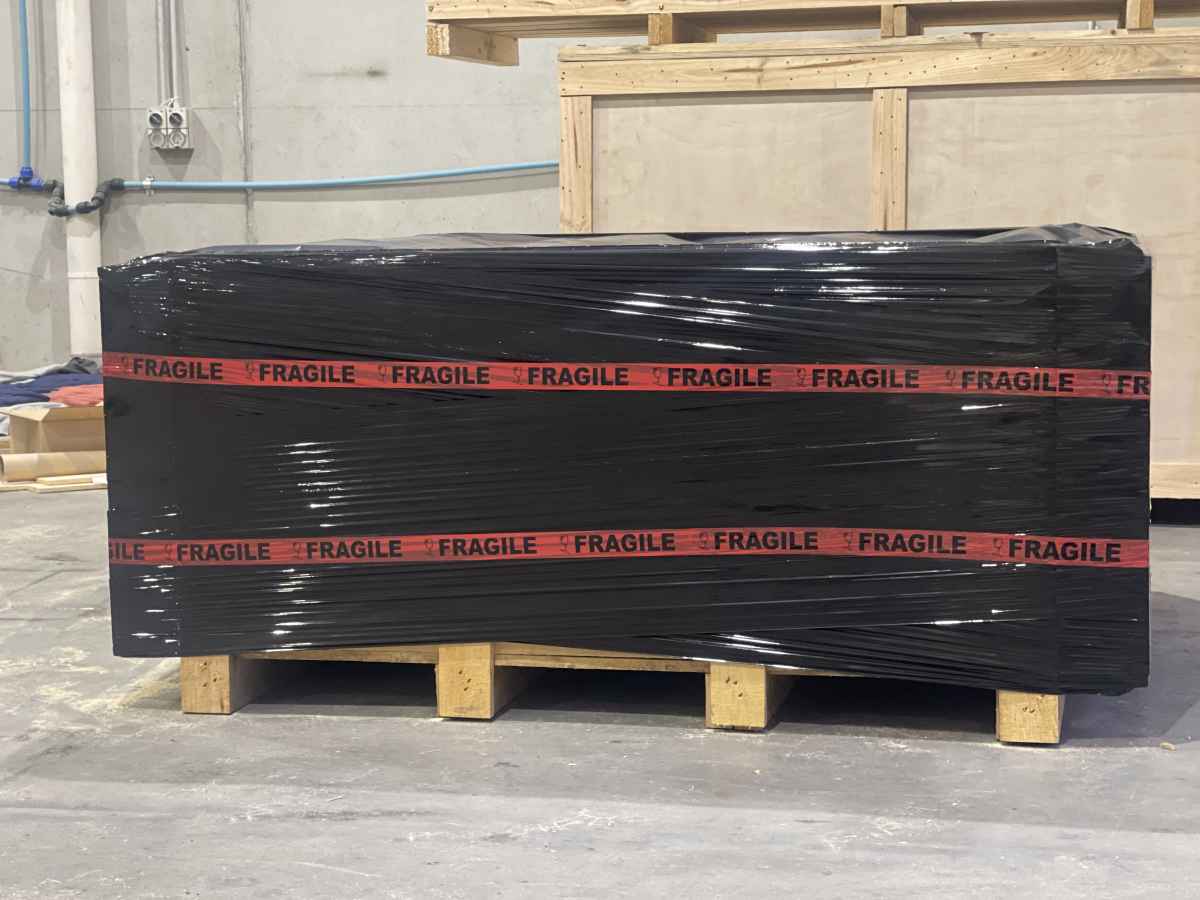
The Importance Of Proper Pallet Wrapping For Load Stability
Pallet wrapping is a crucial packaging technique that helps keep products secure and stable while in transit. It is essential to utilise the appropriate pallet wrapping equipment and stretch film for optimal results. The benefits of using the right pallet wrapping machine and the significance of stretching film for load stability will be discussed in this article.
The Importance Of A Correct Pallet Wrapping Machine
If you want high-quality pallet wrapping, you need to invest in a high-quality pallet wrapping machine. When deciding on a pallet-wrapping machine, you should think about the following details:
- The nature of the bundled items
- Products' dimensions and weights
- The ideal degree of mechanisation
- The necessary promptness and efficacy
The quality of your wrapping results and the security of your items while in storage or transit can both be increased by using a suitable pallet wrapping machine. A Pallet Load Stability expert can come out and test the various settings on the machine to determine what works best for your specific load, such as whether or not you need more wraps, higher tension, or higher stretch for your heavy goods.
The Importance Of Stretching Film For Pallet Load Stability
Load stability depends on utilising the right pallet wrapping equipment and stretching film. By stretching the film, a tighter, more secure wrap is created, protecting the contents from shifting about during transport. In turn, this enhances the load's steadiness and safeguards against spoilage.
The amount of film required for wrapping and protection can be reduced through stretching. As a result, the packaging process can become more efficient and cost-effective.
Using the proper stretch film is essential for getting the job done right. When picking out a stretch film, it's important to think about the following:
- How thick the film is
- The nature of the bundled items
- The ideal degree of exertion
- Conditions under which goods are stored and transported
Overstretching film can lead to tears, which in turn compromises the stability of the load and must be avoided. Instead, you should shoot for an even stretch that adequately protects the film without tearing it.
Different Types Of Pallet Wrappers
Pallet wrappers are available with a wide range of capabilities, advantages, and degrees of automation to meet a variety of needs. Everything from fully automatic machines integrated into conveyor belts and production lines to hand-operated equipment that needs regular attention from workers. No matter the size and cost of your storage area or the nature of the goods you wrap, there is a solution that will work for you.
Turntable
Pallet wrapping equipment with a turntable spins the cargo as the stretch film is fed into the machine. Turntable pallet wrappers work best and are safest when the pallet load is secure and distributed uniformly.
The portability of turntable wrapping machines is an additional perk, giving storage facilities more leeway to rearrange shelving as needed. Due to their cheaper initial cost, adaptability, and overall performance on most frequent forms of load/pallet, these are often the best and most effective solutions.
Straddle Arm / Rotating Arm
Twisting Handle The architecture of pallet wrapping machines, in which the load remains stationary while the arm rotates around it, distributing the wrap as it goes, makes them ideal for wrapping tiny, unstable loads of any weight. Since this pallet wrapper must be fastened to the floor, it can't be moved to the pallets or loads as needed, limiting your warehouse's adaptability. They are also more costly than turntable players.
Orbital / Horizontal
Wrapping the load over and beneath, orbital/horizontal orbital pallet wrappers are commonly included into conveyer belt systems. Flat, cumbersome items like doors, pipes, and carpet rolls benefit from this. These machines can be either mobile or permanently installed, and they can be operated manually, semi-automatically, or entirely automatically.
The Straddle Ring
Machines with this level of specialisation can carry 180+ loads per hour. These fully automated machines are well suited to high-volume conveyer belt activities, such as those found in the tissue, paper towel, and beverage industries.
Robot
Robot Pallet Wrappers provide a simple and practical solution for bringing pallet wrapping into the workplace. Because of their portability and intuitive sensors, they may be deployed wherever they are most useful, and they can encase objects of varying sizes, shapes, and weights. The machines have been built with safety as a top priority, with multiple layers of protection in place to prevent harm or damage.
Advantages of Automating Pallet Wrapping Operations
This directive outlines specific weight and force parameters for cargoes to maintain stability and prevent toppling during transit.
Utilising an automated pallet-wrapping machine enables businesses to ensure compliance with these stringent regulations. Moreover, machines offer features such as film roping, tension settings, and pre-stretch capabilities that cater to uniquely shaped or potentially unstable loads. Consequently, automation assures consistent load integrity, which is challenging to achieve through manual methods.
Efficiency in Material Use
Automating the pallet wrapping process with machinery often leads to a significant reduction in film consumption. Unlike manual wrapping, machines can stretch the pallet wrap film up to 400%, thereby maximising the utility of each roll. This leads to potential cost savings, as less stretch film is required to wrap the same number of pallets.
Labour Cost Optimisation
A single pallet-wrapping machine can perform at the pace of several human workers, offering quicker returns on investment due to reduced labour costs. Furthermore, machine-operated wrapping guarantees uniform application, minimising wastage and enhancing efficiency. This means the pallets are wrapped thoroughly, ensuring no area is missed or overlapped excessively with film, leading to further financial savings.
Improved Employee Well-being
Manual pallet wrapping poses multiple risks to operators, such as muscle strain, back injuries, and slip-and-fall accidents. By transitioning to automated solutions, these commonplace health and safety issues can be mitigated. Automation eliminates the need for physical exertion in the wrapping process, thereby reducing the risk of workplace injuries.
Automating your pallet wrapping process ensures regulatory compliance, optimises material and labour costs, and significantly improves worker safety. All these factors make a compelling case for businesses to invest in automated pallet-wrapping solutions.
Conclusion
Pallet wrapping machines are important for logistics and industrial operations because they secure goods on pallets so they can be stored, moved, and sent to different places.
They use advanced technology to wrap stretch wrap or plastic film around a pallet of goods, making a safe and stable unit that protects its contents from movement, damage, and the weather.
These tools make loads more stable and safe, which makes them an important part of the packaging and shipping chain.
Pallet wrapping machines can be programmed to work faster and keep loads safe all the time. They can be used in many different fields, such as manufacturing, shipping, shopping, and more. The value of properly wrapping pallets to keep loads stable is emphasised. For best results, you need the right tools and stretch film.
For high-quality packing, you have to spend money on a good machine. Things to think about are the type of items being packed, their sizes and weights, the best level of automation, and how quickly and well the job needs to be done.
Stretching film is important for load stability because it makes a tighter, more secure wrap, which makes the load more stable and protects it from going bad. Overstretching film can cause tears that make the load less stable, so it's important not to do it.
Stretch film is put into turntable machines, which spin the cargo as it goes. Straddle arm/rotating arms spread the film as it goes. Orbital/horizontal wraps are used for flat, heavy things like doors, pipes, and carpet rolls.
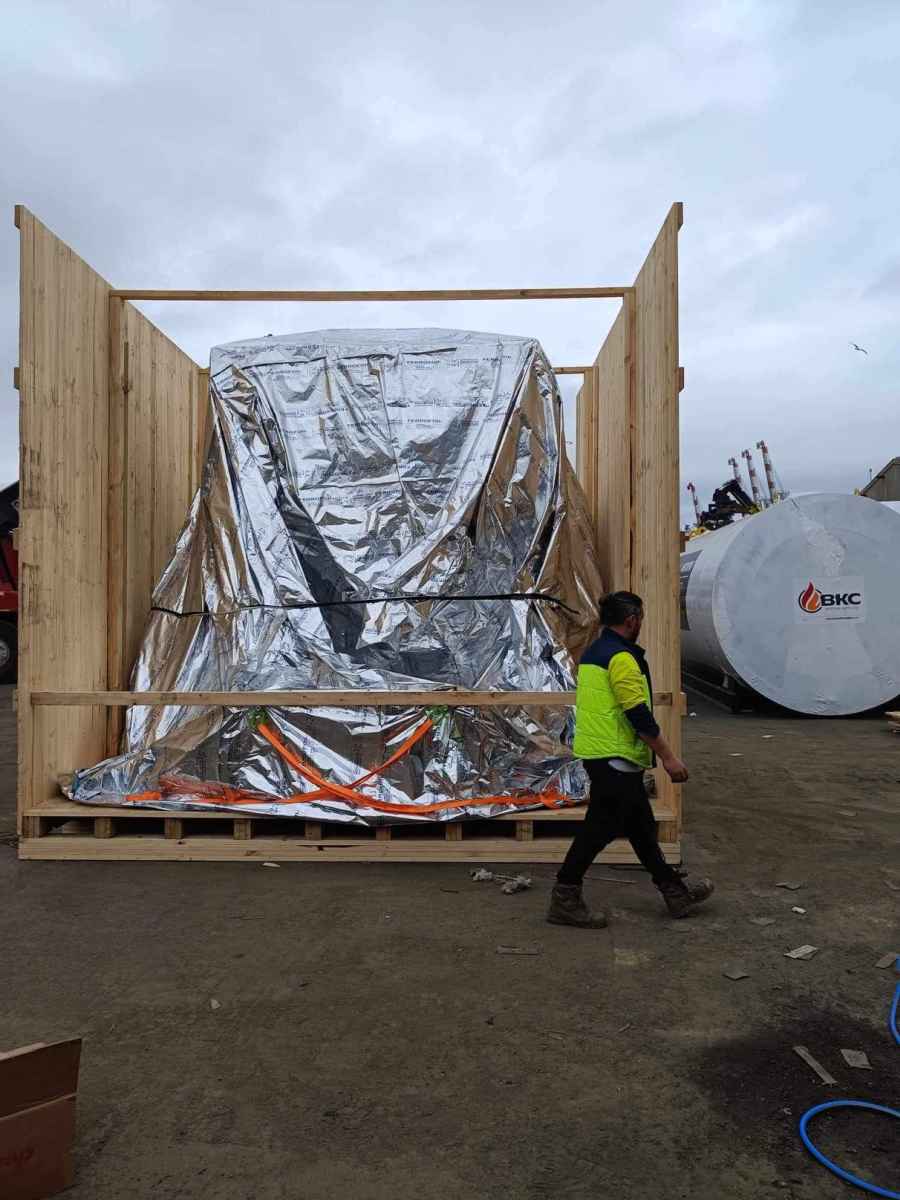
Straddle rings can carry more than 180 loads per hour and are fully automatic, making them good for high-volume conveyor belt activities. Robot pallet wraps can be moved around and have multiple layers of safety features to keep people safe.
Automating pallet wrapping makes sure that rules are followed and gives you options like film binding, setting tension, and pre-stretching. Automation also cuts down on the amount of film used, making each roll last as long as possible and potentially saving money. One machine can do the work of several people at once, so the return on investment is faster. Using a machine to wrap something makes sure that it is done evenly, cuts down on waste, and improves speed. Automated solutions also improve the health of workers because they take away the need for them to move around while packing. Overall, technology makes sure that rules are followed, saves money on materials and labour, and makes workers much safer.
Content Summary
- Pallet wrapping machines are a revolution in logistics and industrial operations.
- These machines, also known as stretch wrappers, enhance the efficiency of handling palletised goods.
- Cutting-edge technology is used to wrap a stretch film around a pallet, ensuring the contents are secure.
- The automation of pallet wrapping ensures uniformity and stability in each load.
- Companies can customise tension, number of wraps, and speed, tailoring the process to their unique needs.
- There is a wide range of pallet wrapping machines available based on operational needs.
- Advanced features such as weighing capabilities and film pre-stretching mechanisms are also available.
- Pallet wrapping machines find utility in various industries like manufacturing, distribution, and retail.
- Proper pallet wrapping is crucial for load stability during transit.
- Using a high-quality machine is vital for optimal pallet wrapping results.
- Various settings can be tested to find what works best for specific types of loads.
- The right stretch film creates a tighter, more secure wrap, enhancing load stability.
- Utilising the correct film can reduce the amount of material needed, making the process more cost-effective.
- Overstretching the film can compromise the load's stability and should be avoided.
- Pallet wrappers come with varying capabilities, advantages, and degrees of automation.
- Turntable pallet wrappers are portable and work best for uniformly distributed loads.
- Straddle Arm or Rotating Arm wrappers are ideal for small, unstable loads but are more expensive.
- Orbital or Horizontal wrappers are great for flat, bulky items and can be integrated into conveyor systems.
- Straddle Ring machines can handle over 180 loads per hour and are suited for high-volume operations.
- Robot Pallet Wrappers are versatile and can handle objects of varying sizes, shapes, and weights.
- Automation ensures compliance with stringent regulations like the European Union Directive 2014/47.
- Machines offer features like film roping and pre-stretch settings for uniquely shaped or unstable cargo.
- Automated machines can stretch pallet wrap film up to 400%, reducing material costs.
- A single machine operates as fast as multiple human workers, leading to quicker ROI.
- Machine-operated wrapping guarantees uniform application, reducing wastage.
- Automation leads to significant labour cost optimisation.
- Machines ensure that no area of the pallet is missed or overlapped excessively with film.
- Manual pallet wrapping poses health risks like muscle strain and back injuries.
- Automated solutions mitigate common health and safety issues.
- Automation eliminates the need for physical exertion in the wrapping process.
- Pallet wrapping is an integral part of the packaging and logistics chain.
- The machine's turntable dispenses and stretches film while revolving, securing the load.
- Automated variants can have advanced interaction with conveyor systems.
- Remote monitoring access provides better management and oversight of the packing process.
- Stretching the film enhances the load's steadiness and protects against spoilage.
- Proper stretching of film is essential for load stability.
- Load stability depends on using the right equipment and stretch film.
- Turntable pallet wrappers are often the most effective and cost-efficient solutions.
- Straddle Arm wrappers need to be fastened to the floor, limiting warehouse adaptability.
- Orbital wrappers can be operated manually, semi-automatically, or fully automatically.
- Robot Pallet Wrappers have been designed with multiple layers of safety features.
- Pallet Load Stability experts can optimise machine settings for specific types of cargo.
- Advanced features allow for better management and oversight of the wrapping procedure.
- Pallet wrapping machines are adaptable to various industrial needs.
- The appropriate machine and film can increase the security of items during storage or transit.
- Investing in high-quality machines and films can result in long-term cost savings.
- Machines are available to suit the size and cost constraints of different storage areas.
- Straddle Ring machines are well-suited for industries like tissue, paper towels, and beverages.
- The choice of stretch film should consider factors like thickness and storage conditions.
- Automation in pallet wrapping significantly improves worker safety, making it a compelling investment for businesses.
Frequently Asked Questions
Some of the most common safety risks of stretch wrappers include: Workers being struck by moving parts of the machine. Hands or loose clothing being caught in the machine. Injuries resulting from trying to reattach film after a film break.
Prior to use, inspect the pallet wrapper for any damage or defects that may affect safe operation. Ensure the work area is free of any tripping hazards, debris or obstacles. Ensure that all sharp edges on the pallet or products being wrapped are covered or padded.
When you use the right stretch wrapping machine, it will ensure that your goods are securely wrapped to avoid any potential damage from dirt, dust, or moisture.
One of the best ways to improve pallet racking safety and avoid incidents like these is to install rack back-stops, which prevent operators from putting the rack too deep by creating resistance. It's a simple solution, but it has a significant impact on warehouse racking safety.
The shrink film wrapping process involves enclosing a product(s) in a shrink film. The film is then formed around the product using a sealer. Then, the product is heated by a hand-held heat gun or automated heat tunnel equipment so that the shrink film shrinks around it to create a tightly sealed package.

